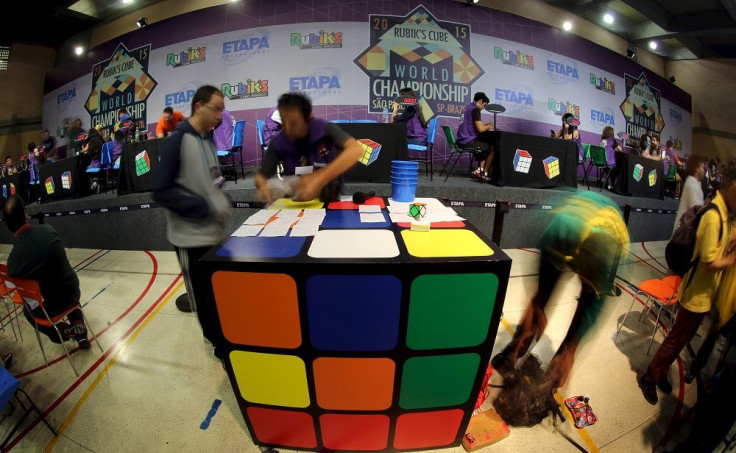Aussie Teen Wins Rubik’s Cube World Championship In Brazil With Record Time Of 5.695 Seconds

To many ordinary mortals, the Rubik’s Cube is one of life’s difficult games they have encountered. But to experts who competed at the Rubik’s Cube World Championships held in Sao Paulo, Brazil, over the weekend, it just took them seconds to solve the cube.
Feliks Zembegs, a 19-year-old Australian, won with a record time of 5.695 seconds. While he kept his 2014 title, Zembegs has yet to beat the 5.25 seconds record of American Collin Burns who didn’t compete in Brazil which Burns set in April at another Rubik’s Cube competition in Pennsylvania, reports Mashable.
Mathematicians say the cube can be solved, at most, in 20 moves. To do that, the constructive approach is to use some sort of method, or algorithm, such as solving one side first, according to Plus.Maths.org. The portal said that god’s algorithm of the Rubik’s Cube solves the cube in the smallest possible number of moves for any given starting position. The explanation is that “even if you can’t figure out what that algorithm is, god, being omniscient, certainly can. The number of moves that god’s algorithm takes from the worst possible starting position is god’s number.”
The standard 3x3x3 Rubik’s Cube that Zembegs used has 43,252,003,274,489,856,000, or 43 quantillion, stating positions which took scientists the equivalent of 35 years of computing on one computer to crack the number.
For people like Zembegs, called speedcubers, solving the cube could be done swiftly while riding unicycles or blindfolded. Andrew Winslow, a doctoral student in theoretical computer science with concentration on computational geometry, has a tip for ordinary mortals who couldn’t solve the cube at all.
Winslow and several researchers from Boston tried to figure out how a computer would efficiently solve the cube. They presented the result at the 19th annual European Symposium on Algorithms in September 2011.
The paper stresses that the usual way of thinking leads to the wrong conclusion in solving the cube. Winslow, who shares that he had never solved a Rubik’s Cube until the study was released, advises frustrated cubers: “You just need to sit down for a couple of hours and read the instructions online about it,” quotes Tufts.
To contact the writer, email: vittorioherndez@yahoo.com






